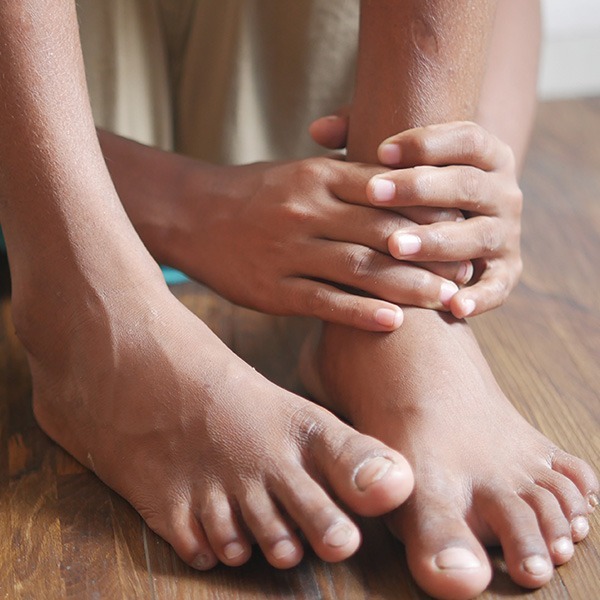Self-Care for Rheumatoid Arthritis
Symptoms like aching feet and ankles make shoe shopping an important part of rheumatoid arthritis self-care. Consider functionality above form when you’re selecting new shoes.
Are your feet aching? “It’s quite common for symptoms of rheumatoid arthritis to first appear in the feet, the forefoot, back of the feet, and ankles,” says Alison Garten, DPM, CPed, vice president of the American Association of Women Podiatrists along with a podiatrist in Washington, D.C. These foot problems might make shoe shopping more challenging for those who have rheumatoid arthritis.
Opt for assistance
The most important thing is that the shoes you’re considering offer support, says Dr. Garten. The more support a shoe has, the more it supplies shock absorption and will protect your joints – attributes you need, when you have rheumatoid arthritis. Good support means choosing the correct shoes. Also look for removable insoles that can be replaced with custom orthotics that provide more support or greater insoles. Styles like slip-ons or mules, which offer no assistance, can cause more pain than support.
Check for room
Your feet will hurt more than just cramped toes and will aggravate further, in case you have bunions. Look for shoe styles with wide toe boxes, Garten says. You also need a little additional room in the heels: A finger’s width of room between the back of your heel and the shoe is best. Remember that when you have arthritis, you might have to buy shoes a size larger than you used to wear.
Avoid heels
High heels should be avoided by women with rheumatoid arthritis. Research shows that girls who regularly wore slippers, sandals, and high heels were prone to have foot pain compared to girls who wore casual shoes, like sneakers. They aren’t worth the pain that they could cause, says Kirsten Borrink, who has rheumatoid arthritis. Be sure they are no more than one inch if you have to wear heels, Borrink says. If you do choose shoes with a slight heel make sure the design also has a strap so that your own foot is secured by it.
Rubber bottoms
The shoes you can purchase when you have arthritis are those with rubber bottoms, Garten says. The advantage of rubber bottoms is that they give you cushioning. Verify the bottoms of shoes you are contemplating as closely as you assess the fit. Be sure since that’s where you push when you walk, that the sole is most flexible in the ball of the foot.
Don’t skimp on shoes
Finding great shoes when you have rheumatoid arthritis can be tricky. Avoid shoes with thick treads since they might eventually become a tripping hazard. If your ankles hurt or are weak, you may prefer sneakers. Above all, invest the money needed to obtain a fantastic quality shoe designed for jogging or walking, Borrink says, including, “I have one set that I love since they’re really sturdy.” On the other hand, she warns against so-called shaping or toning shoes. “Should you wear them too frequently, they’ll throw your knees out of whack – you could hyperextend your own knee.”
Consider shoes without laces
People with rheumatoid arthritis have pain in their feet, which can make tying shoes difficult, as well as pain in their hands. The remedy is simple. Instead, choose shoes that close with velcro or even zipper. (Remember to bypass the slip-ons since they don’t supply support.) An assistive device, like a long-handled shoehorn, will be able to help you get feet affected to shoes more easily. And keep your eyes peeled for new user shoes. In 2016, Nike came out with the HyperAdapt 1.0, a self-lacing sneaker that’s armed with embedded sensors that tighten when your foot strikes the cushion and conforms to its own shape. The shoe is offered in metallic silver/black-white and lagoon and is that the offspring of Tinker Hatfield, the designer of Nike’s Air Jordan and Air Max footwear lines. Shoes that have secure alternatives to tying laces will offer the most convenience and will avoid the pain associated with rheumatoid arthritis.
Consult your physician for footwear tips
Finally, ask your physicians to make recommendations and explain how you can evaluate shoes before your purchase. Work as a team with your rheumatologist along with your podiatrist to look after your feet. “It’s the best way to handle the ankle and foot problems that are trivial when you have rheumatoid arthritis.” says Garten.







